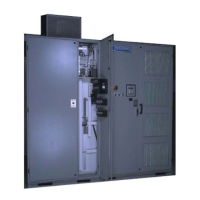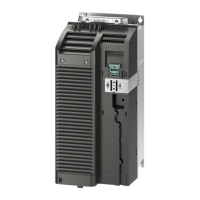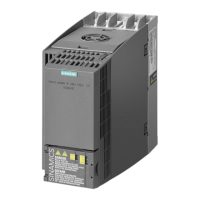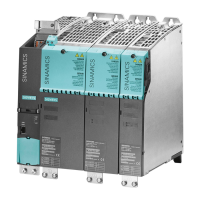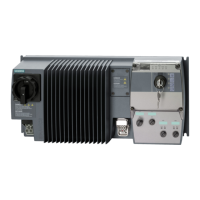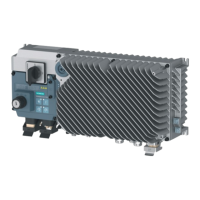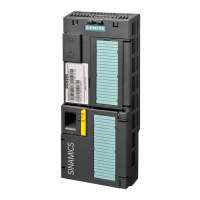– Precharge has not been attempted more than 5 times per hour and not within the past
minute (if enabled)
Note
Cells in bypass
If any cells are in bypass prior to losing MV, their respective bypass contactor is opened
since the bypass contactor power supply is energized by one phase of the MV input.
During the subsequent pre-charge, if the cell is detected as faulted, pre-charge will pause
indenitely until a manual drive reset is activated.
Pre-charge will then proceed and the detected faulted cell will be bypassed after pre-
charge is complete.
Setting PrechargeStartEnable_O to true initiates the pre-charge sequence. Pre-charge will
not initiate if DriveReadyToPrecharge_I is not true, or any of the above conditions are not
met.
"Precharge voltage level" (2634) - Voltage to stop M2 resonance and advance to state machine
- Range - 80 % to 95 % with default set to 90 %.
8.18.4 Type 1 (Closed) Pre-charge (6SR325)
Type 1 pre-charge uses a capacitor circuit chosen to be in resonance with the inductance of the
secondary windings of the input transformer.
• This circuit design allows a lower voltage source to charge a higher voltage rated cell while
limiting the inrush to both the transformer and the cell capacitors.
• The voltage must be carefully monitored to prevent the cells from overvoltage.
To prevent cells from overvoltage, a resistor circuit is connected through contactor M3 when
the highest of the three input phase voltages, measured on the primary of the input
transformer, reaches 95% of rated voltage. The resistor overdamps the pre-charge circuit and
the voltage increase ceases. At this point the capacitor circuit is disconnected and the main
contactor to the medium voltage source is closed. Once closed, the resistor network is
opened and pre-charge is complete. The pre-charge request can be removed. This constitutes
a make-before-break (closed) contactor sequence.
Type 1 Pre-charge circuit design
Type 1 pre-charge uses contactors M2 and M3 in addition to the main input contactor M1. The
pre-charge source can either be attached to one of the existing secondary windings, or can be
a separate dedicated winding on the secondary. The second choice is preferable for the high
voltage cells since applying near rated voltage from an external source is less desirable than
supplying 480 to 690 Vac to a special dedicated secondary winding on the transformer.
Advanced Operating Functions
8.18 Pre-charge using SOP
NXGPro+ Control Manual
290 Operating Manual, A5E50491925A
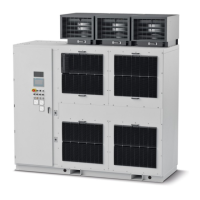
